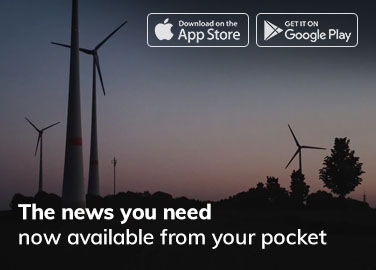Pine Straw Calculator
Estimate bales needed from your bed areas and coverage preference
Add Bed Areas (square feet)
| # | Shape | Details | Area (sq ft) | Remove |
|---|---|---|---|---|
| No beds added yet | ||||
Coverage & Cost
Estimated Bales Needed
Total Area
Coverage per Bale
Total Cost

Pine Straw Calculator: Bales & Cost Estimate — Step‑by‑Step Guide
Want a quick, confident estimate for pine straw? This guide explains the coverage formula, how to measure any bed shape using pine straw calculator, when to use 35 vs. 40 sq ft per bale, and worked examples—including costs—so you can order the right amount the first time.
What this pine straw cost estimate
- Total bed area (add multiple beds/shapes)
- Bales needed (raw and rounded up)
- Extra coverage after rounding
- Optional total cost (if you enter price per bale)
The formula (simple and transparent)
• Typical coverage per bale (2–3″ thickness):
– New/bare ground: 35 sq ft/bale
– Reapplying over existing straw: 40 sq ft/bale
• Ordering rule: You can’t buy a fraction of a bale—always round up.
Coverage varies by bale density, pine type, vendor, and how thick you spread. When in doubt, add 1 extra bale per 8–10 bales.
Coverage quick reference
| Scenario | Recommended Coverage | Why |
|---|---|---|
| New/bare ground | 35 sq ft/bale | Thicker 2–3″ layer helps suppress weeds and evens color |
| Reapplying/refresh | 40 sq ft/bale | Existing straw provides base; lighter top‑up restores color/texture |
| Windy slopes, edges | Plan a bit extra | Movement and retention can require more material |
How to measure your beds
Rectangles
- Area = Length × Width (in feet)
- Example: 20 × 5 = 100 sq ft
Circles
- Measure diameter (across center)
- Radius = diameter ÷ 2
- Area = π × radius² (use π ≈ 3.14)
- Example: D=12 → r=6 → 3.14 × 36 ≈ 113 sq ft
Right triangles
- Area = (Base × Height) ÷ 2
- Example: (12 × 6) ÷ 2 = 36 sq ft
Irregular beds
- Break into rectangles/triangles and sum the areas
- Or enter a custom area if you have plans/app measurements
How to use the pine straw calculator (step by step)
- Add bed areas. Choose a shape (Rectangle, Circle, Right Triangle, or Custom) and enter dimensions. Add all your beds.
- Choose coverage per bale. Use 35 sq ft for new/bare ground, 40 sq ft for refresh, or a custom value if your supplier specifies one.
- (Optional) Enter price per bale. Get an instant materials cost.
- Calculate. See raw bales, rounded bales to order, extra coverage from rounding, total area, and optional cost.
Worked examples
Example 1 — New bed (rectangle)
- Area: 20 ft × 5 ft = 100 sq ft
- Coverage: 35 sq ft/bale (new ground)
- Bales: 100 ÷ 35 = 2.86 → round up → 3 bales
Example 2 — Circular bed refresh
- Diameter: 12 ft → radius = 6 ft → Area ≈ 113 sq ft
- Coverage: 40 sq ft/bale (reapplying)
- Bales: 113 ÷ 40 = 2.83 → round up → 3 bales
Example 3 — Multiple beds + cost
- Rectangle: 18 × 6 = 108 sq ft
- Circle: D=10 ft → r=5 → 3.14 × 25 ≈ 78.5 sq ft
- Right triangle: (12 × 6) ÷ 2 = 36 sq ft
- Total area ≈ 222.5 sq ft
- Coverage: 35 sq ft/bale → Raw bales = 222.5 ÷ 35 = 6.36 → round up → 7 bales
- Price per bale: $6.50 → Estimated cost: $45.50
- Extra coverage from rounding = (7 × 35) − 222.5 = 22.5 sq ft
Pro tips for a cleaner, longer‑lasting install
- Edge first: Define crisp bed edges so straw sits neatly without spilling into turf or walkways.
- Weed prep: Remove visible weeds; consider a pre‑emergent where allowed to extend that clean look.
- Spread evenly: Lay toward the interior, fluff, then tuck along edges for a uniform finish.
- Water lightly: A brief mist helps straw settle and reduces wind displacement.
- Order buffer: Add 1 extra bale for every 8–10 bales to cover odd corners, slopes, and touch‑ups.
Common mistakes (and easy fixes)
- Using one coverage for everything: New beds need more (35). Refreshes can use less (40).
- Forgetting to round up: You can’t buy 0.6 of a bale; always round to the next whole bale.
- Under‑measuring curves: Circles aren’t “diameter × diameter.” Use πr² or the calculator’s circle mode.
- Ignoring wind/slope: Plan a bit extra and secure edges as needed.
FAQs
How many square feet does one bale cover?
Commonly 35–40 sq ft per bale at a 2–3″ thickness. Use 35 for new/bare ground, 40 for reapplications.
How many bales do I need for 1,000 sq ft?
New/bare ground: 1,000 ÷ 35 ≈ 28.6 → 29 bales.
Reapplying: 1,000 ÷ 40 = 25 bales.
How thick should I apply pine straw?
Typically 2–3″. Go thicker for new beds to suppress weeds; lighter for a color refresh.
How often should I reapply?
Most landscapes refresh once or twice per year, depending on weather, traffic, and desired appearance.
Do I need to round up the bale count?
Yes. You can’t buy partial bales. The mulch coverage calculator shows raw and rounded counts and the extra pine straw cost estimate created by rounding.
What if my bed is irregular?
Split it into simple shapes (rectangles, circles, right triangles) and sum the areas, or enter a known custom square footage.
Quick reference: area formulas
- Rectangle: L × W
- Circle: 3.14 × (D ÷ 2)²
- Right triangle: (Base × Height) ÷ 2
Use the pine needle mulch calculator to total all your beds, choose the right coverage (35 for new, 40 for refresh), and round up your bale count. Add price per pine straw bales needed to budget instantly. With a little planning—and one extra bale for insurance—you’ll get a clean, uniform finish the first time.
You can explore Similar Calculator like this AP statistics score calculator.

